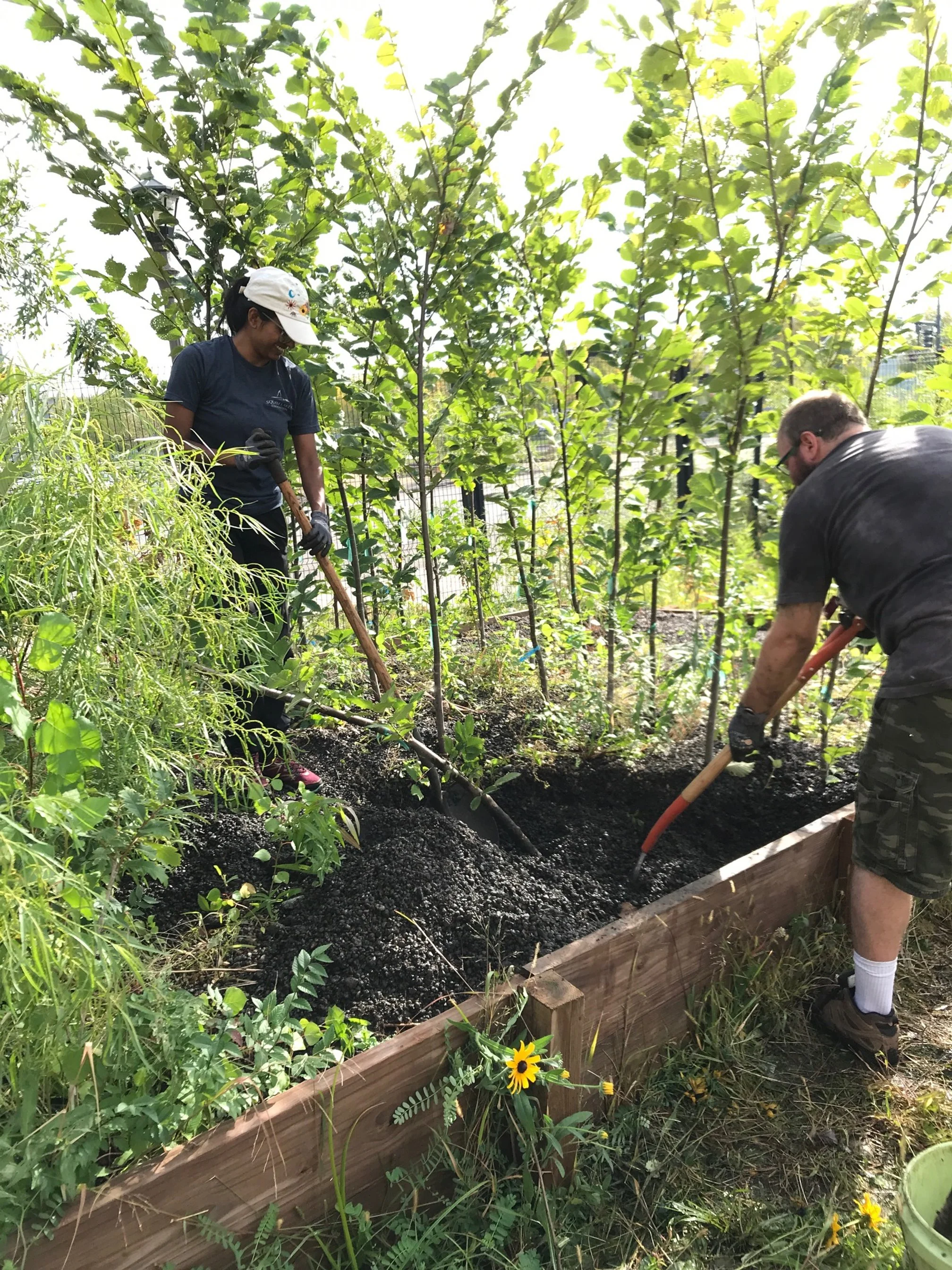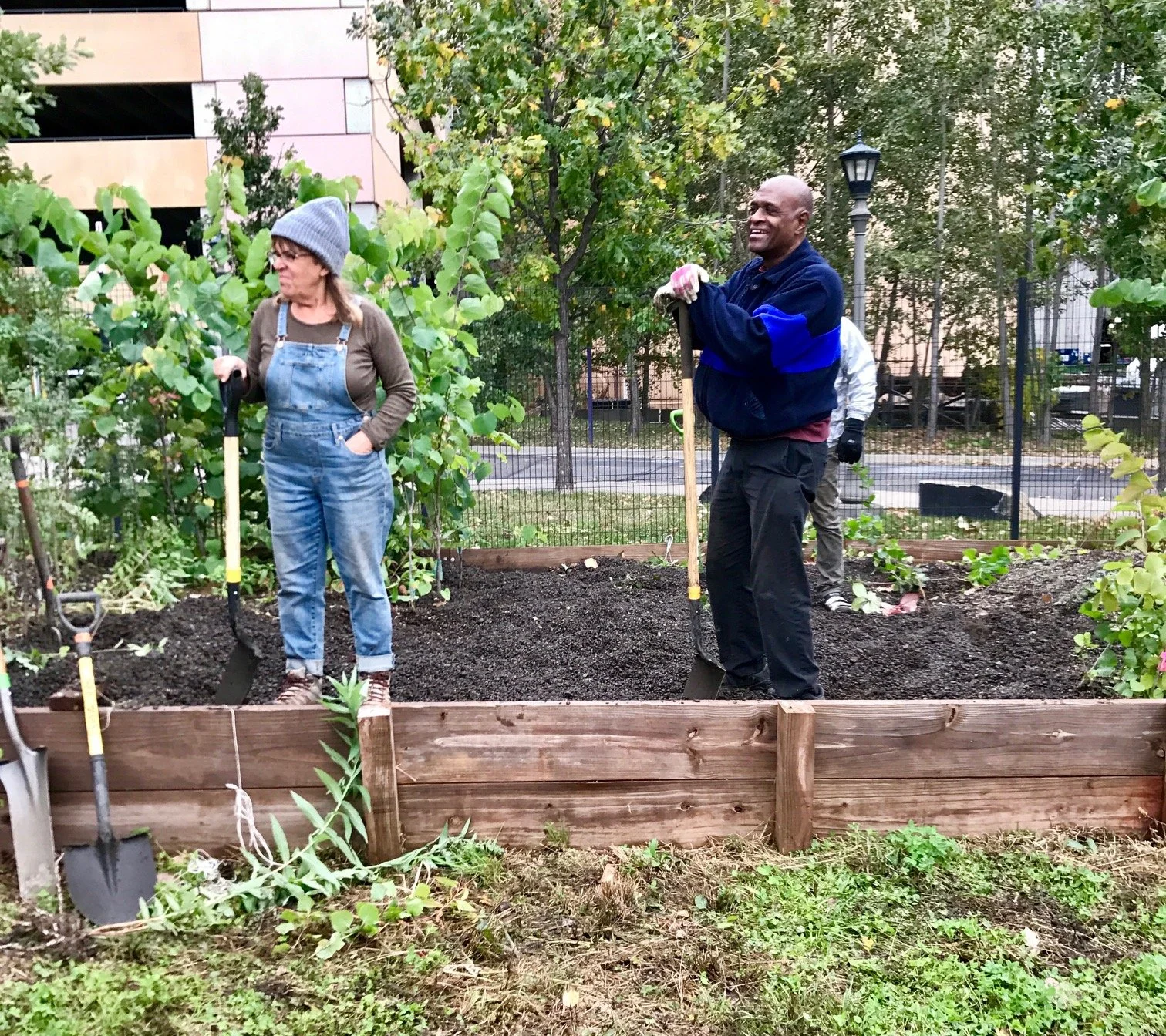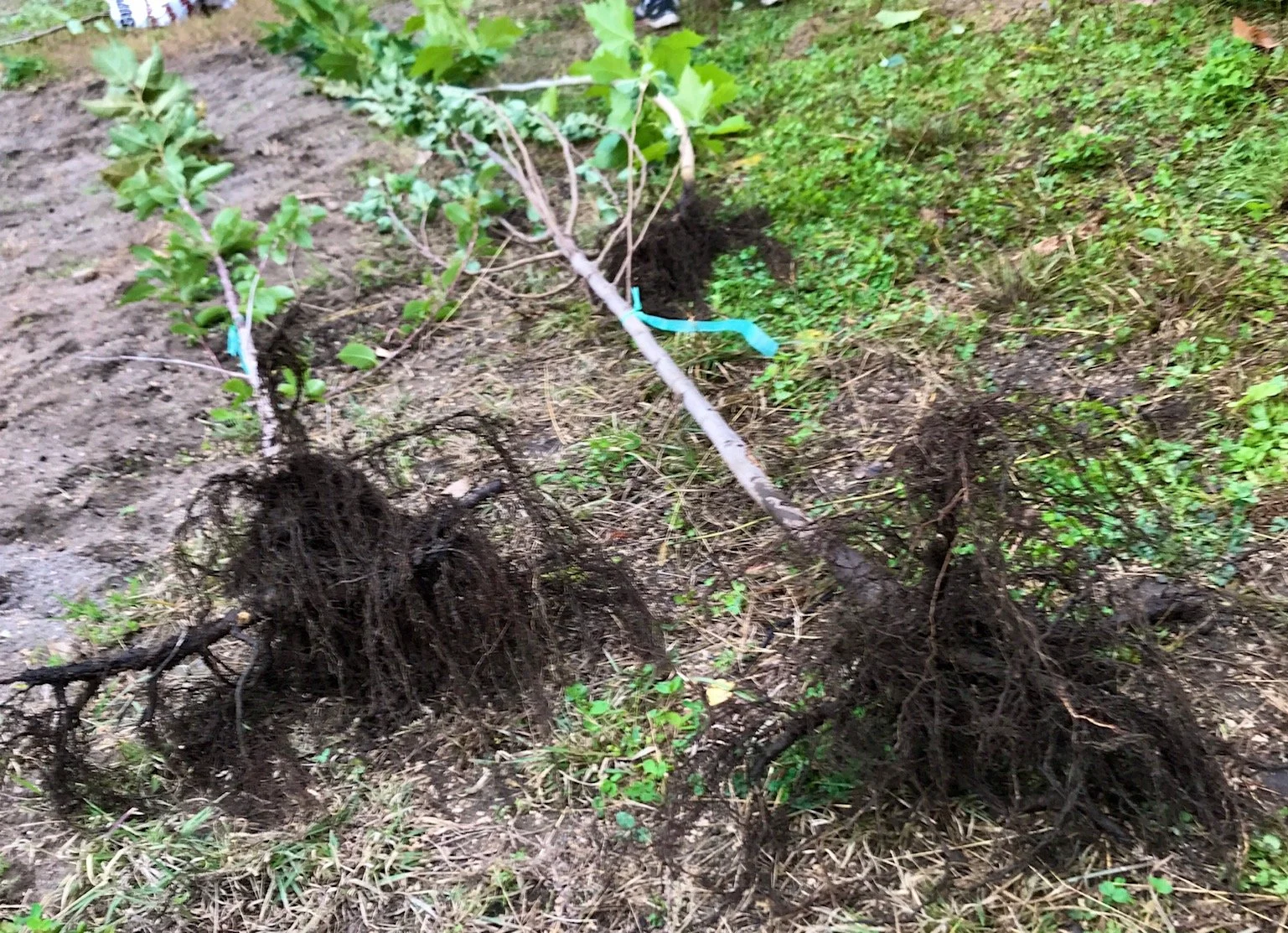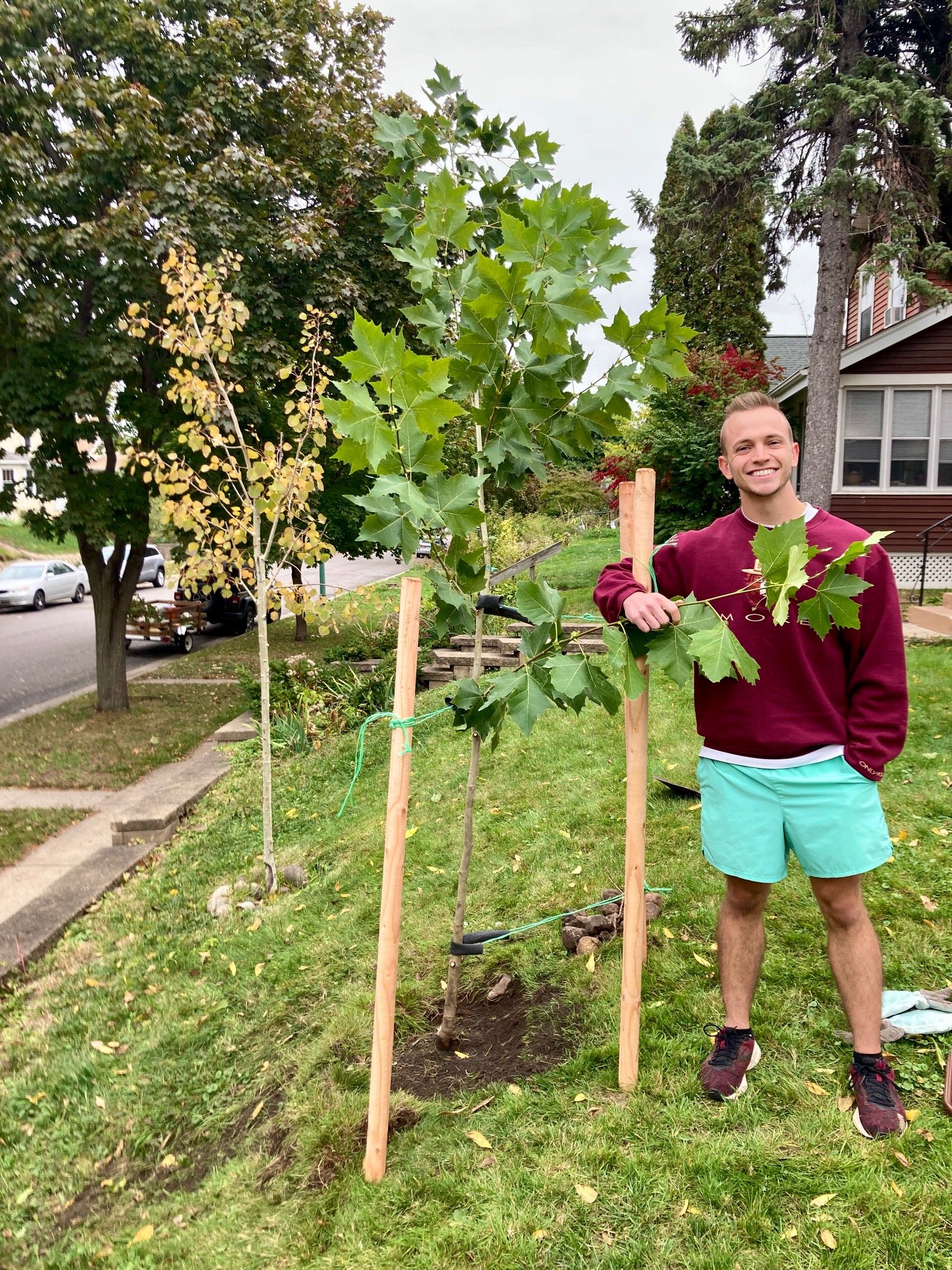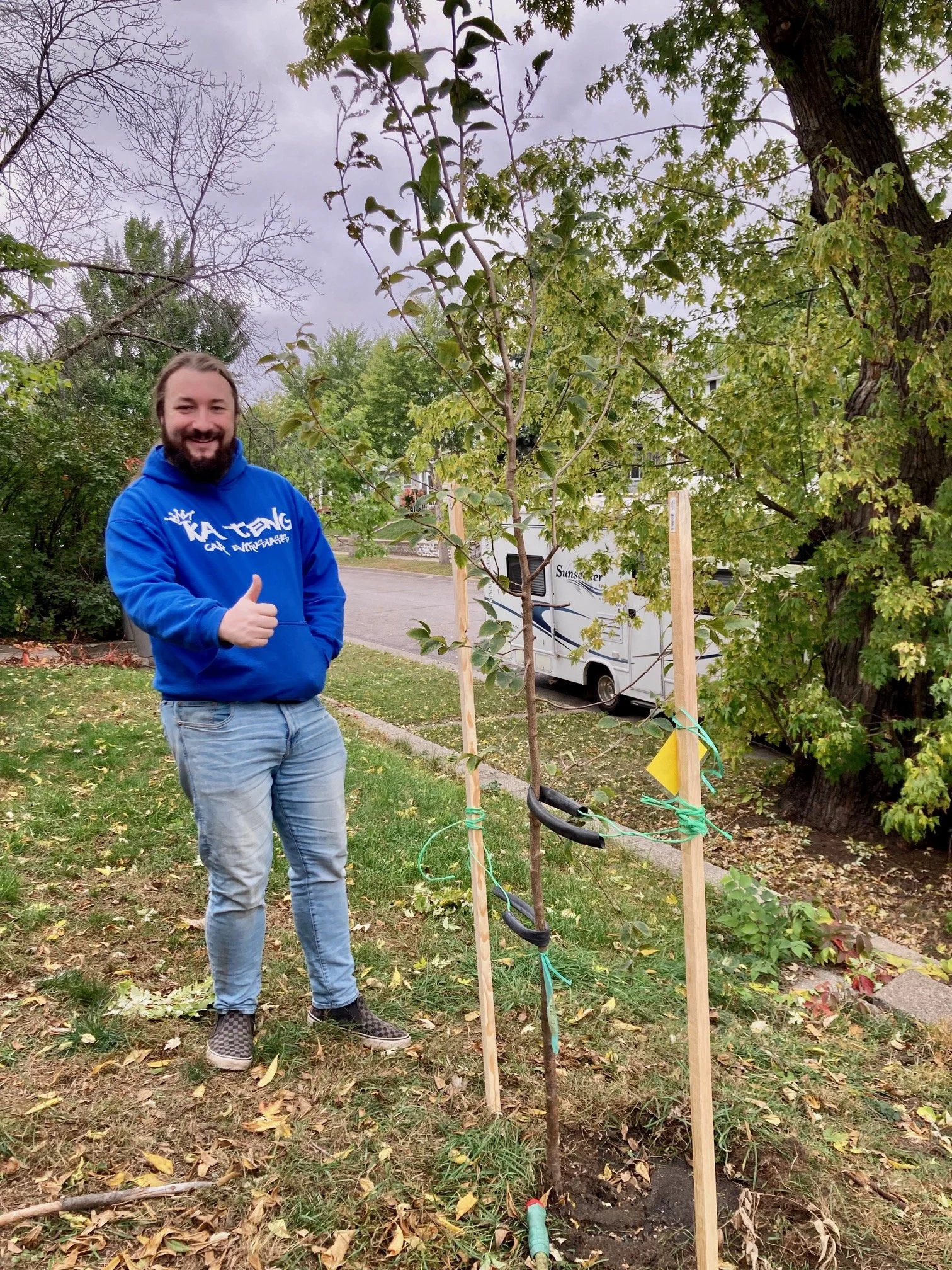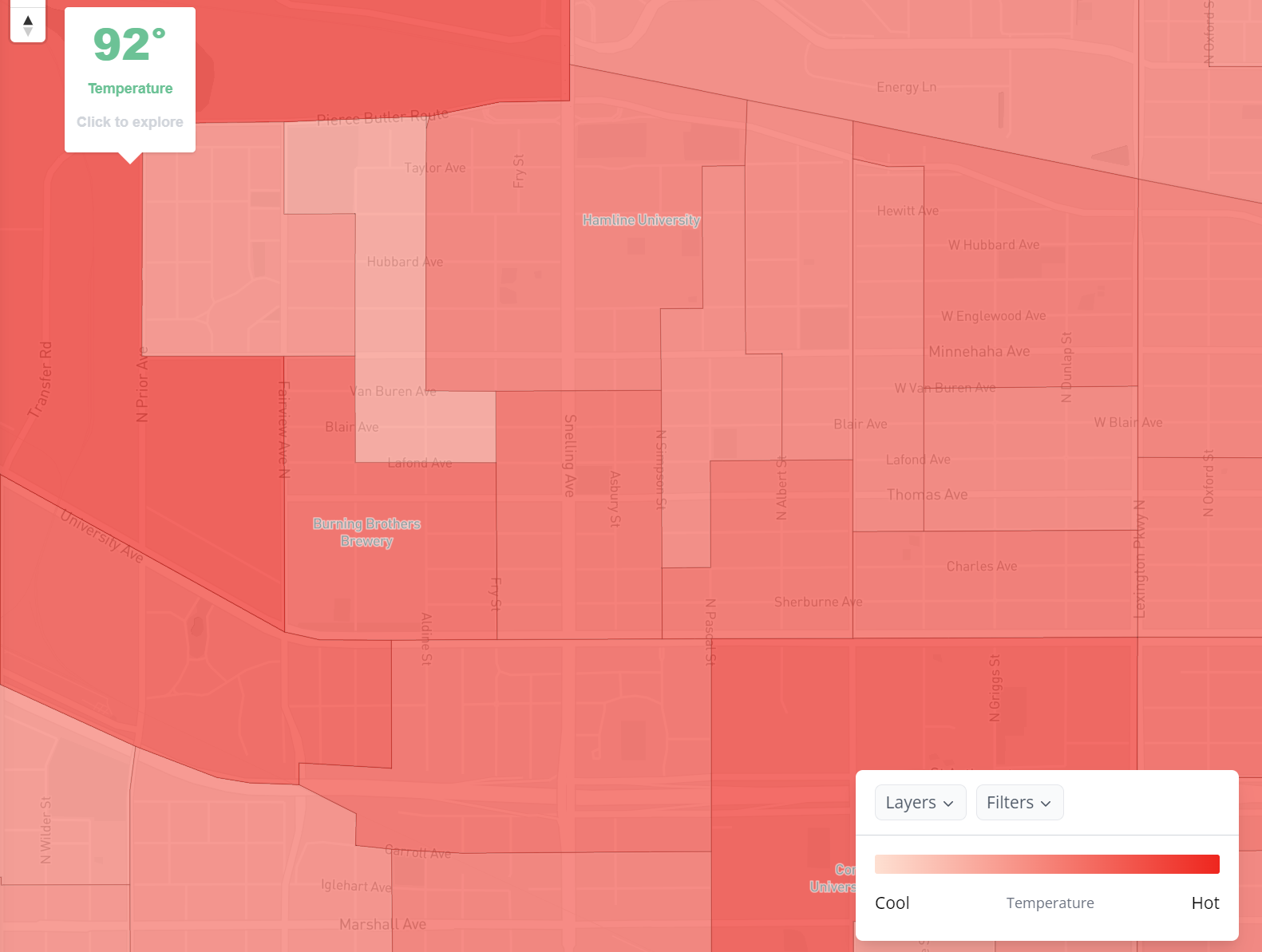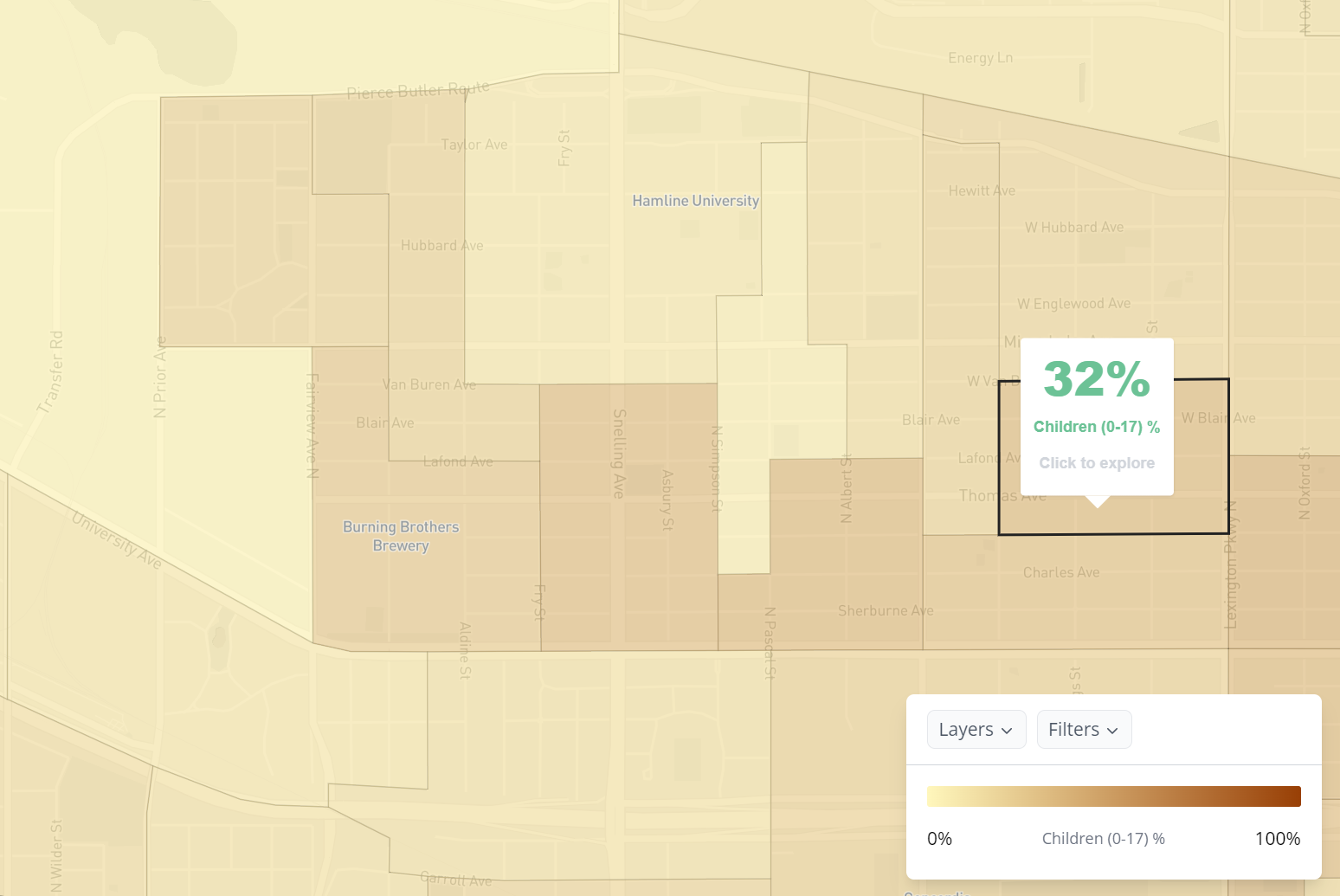Free Trees for canopy equity in the Midway: Gravel bed program born in 2021
In 2021, a new gravel bed urban tree canopy project was initiated by volunteers on the Hamline Midway Environment Committee (HMEC) as part of the Hamline Midway Coalition. It was an easy decision to get behind this work; This project brings climate change mitigation for this part of the city and an opportunity to correct environmental injustices from inequitable tree canopy coverage.
Tree planting to date
In October 2021, HMEC volunteers along with AmeriCorps support installed 22 trees over 2 planting days in the Midway. Similar efforts happened in the Frogtown & Rondo neighborhoods. The Hamline Midway neighborhood of St. Paul is experiencing urban tree losses from disease, insects and aging trees. 17% of our urban forest will be lost to Emerald Ash Borer alone. This was the first year for HMEC to plant trees from gravel beds, a local model adopted by Frogtown Green about a decade ago. In 2021 Frogtown Green kickstarted similar efforts in the Midway and Rondo neighborhoods of Saint Paul. So far, Frogtown Green has planted more than 600 trees in that community! The gravel bed tree nurseries used in this project allow for growing low-cost bare-root trees into strong specimens that will be well suited for our urban setting.
Private properties have the highest canopy disparities
Private property is the target with these free trees because that is where the most canopy disparities exist in the Midway neighborhood. Star Tribune in July of 2021 reported that St Paul’s Public trees (boulevards, parks and etc) are well planted. This situation was echoed in January 2022 by city forestry staff who directed community tree planters to support private properties because the biggest gaps in the Midway are not on public land. Further, many Midway residents are stretched for resources, which brings strong environmental justice concerns. 28.6% of Midway neighbors are living with income <185% of the poverty threshold, nearly 9 points higher than the region.
Looking into equity details in the Growing Shade mapping tool from the Met Council, the Hamline Midway neighborhood is below average for several statistics, such as canopy coverage, and equity in regards to canopy coverage for BIPOC populations and household incomes and these factors influence planting Priority Scores strongly in Hamline Midway. (http://interactives.metrocouncil.org/growing-shade/
Tree canopy equity is a top concern
Tree canopy equity is a top concern for HMEC volunteers and we are working towards make this an annual initiative for our community. Canopy evaluation tools show that Midway has high planting priority areas of concern and that in some places, the current canopy coverage falls short. The Priority Score Map above from the Growing Shade mapping tool from the Met Council calls out the gaps in our transportation corridors and industrial areas. The neighborhood is situated along a major interstate and has high concentrations of pollutants from vehicle exhaust. Asthma rates are higher among kids along this corridor in St Paul; chronic obstructive pulmonary disease and other respiratory illnesses are higher among adults. The Met Council’s canopy tool reports that Lifetime cancer risk from air toxics in our neighborhood out ranks the region (32.67 versus 28.49)
Data shows that some places in the Midway experience summer heat 5-7 degrees more than the rest of the city.
Data also shows that because of canopy gaps, some places in the Midway experience summer heat 5-7 degrees more than the rest of the city. Further, residential tracts that have higher populations of children, higher percentages of BIPOC residents and/or residents struggling with poverty live in Midway blocks with fewer trees. This contributes to strong environmental justice concerns where the neighborhood’s tree gaps occur.
Midway children are more likely to live in hotter and less forested areas. Sectors range in 6-32% children (ages 0-17) in the Hamline Midway.
https://treeequityscore.org



